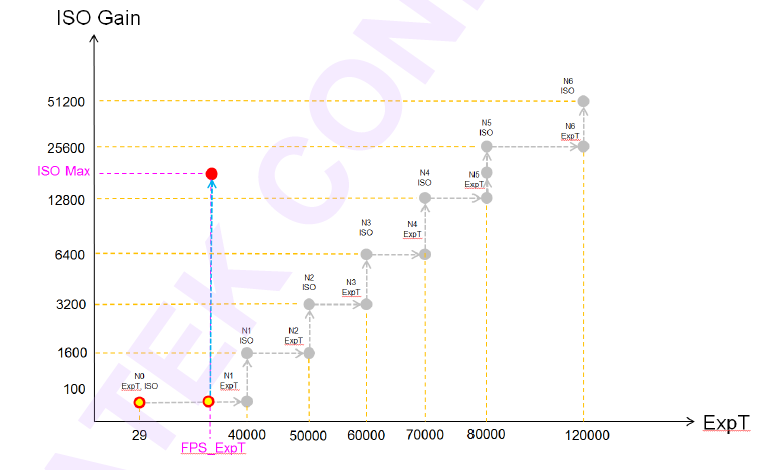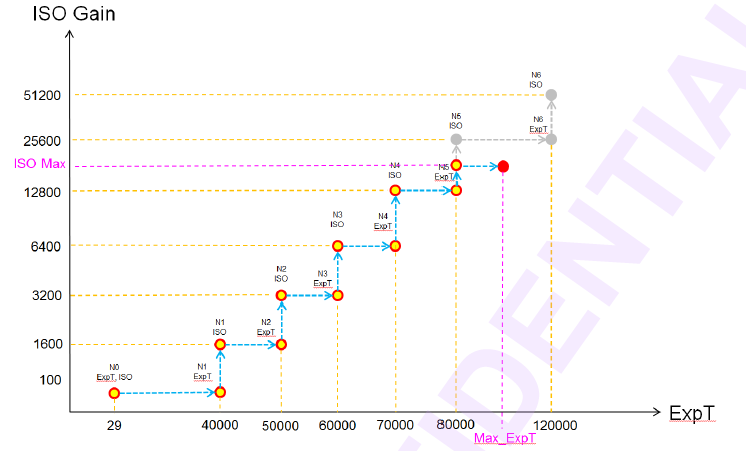Why is the gain non-adjustable during camera auto-exposure?
The design of cameras making gain non-adjustable during auto-exposure primarily includes the following reasons:
(1) In image signal processing (ISP), the auto-exposure (AE) algorithm typically involves three core parameters: gain, shutter time (digital shutter, exposure time), and aperture (which requires an external controllable aperture device; if not connected, it becomes non-adjustable).
(2) The nature of gain: Gain (analog or digital) increases brightness by amplifying the sensor signal but simultaneously amplifies noise. High gain can lead to a decrease in the image signal-to-noise ratio (SNR), resulting in noticeable noise or color distortion.
(3) The nature of digital shutter time (exposure time): Digital shutter time (exposure time) adjusts brightness by changing the duration of light exposure to the sensor—the longer the exposure time, the brighter the image. Exposure time is related to the image frame rate (exposure time and frame rate are inversely proportional). The longer the exposure time, the lower the frame rate.
(4) Algorithm Optimization for Enhanced Image Quality
During auto-exposure in microscope cameras, the ISP algorithm automatically adjusts gain and exposure time based on different scenarios or application environments. Various scenarios require different combination strategies to achieve optimal image quality. Manual gain adjustment may lead to issues such as significant image noise, color distortion, or underexposure.
As shown in Figure 1 below, a common strategy in brightfield observation is to maintain a fixed exposure time (ExpT) and frame rate while automatically adjusting the ISO Gain to achieve the desired exposure brightness.

Figure 2 below illustrates a common strategy employed in darkfield observation. This approach automatically adjusts both the exposure time (ExpT) and ISO Gain based on the microscope's illumination and the specimen being observed to achieve the desired exposure brightness.

In summary, the non-adjustability of gain is typically a trade-off made by the ISP between image quality and algorithmic efficiency, rather than a technical flaw. In practical applications, exposure time and gain can be manually optimized according to specific scenarios.

